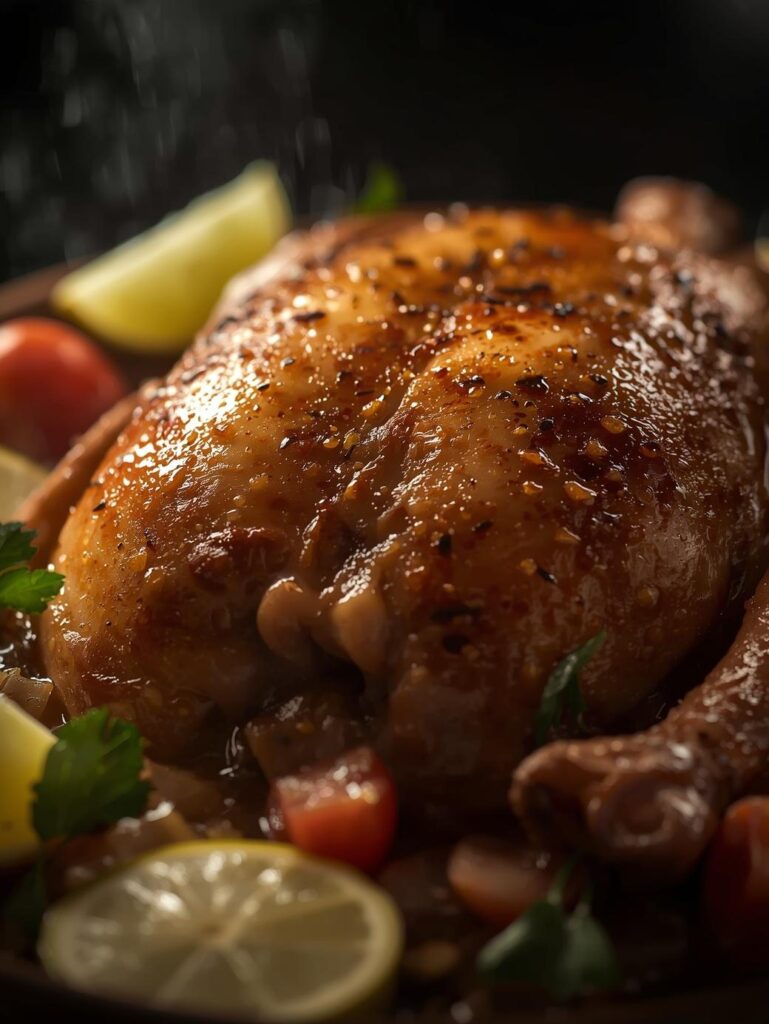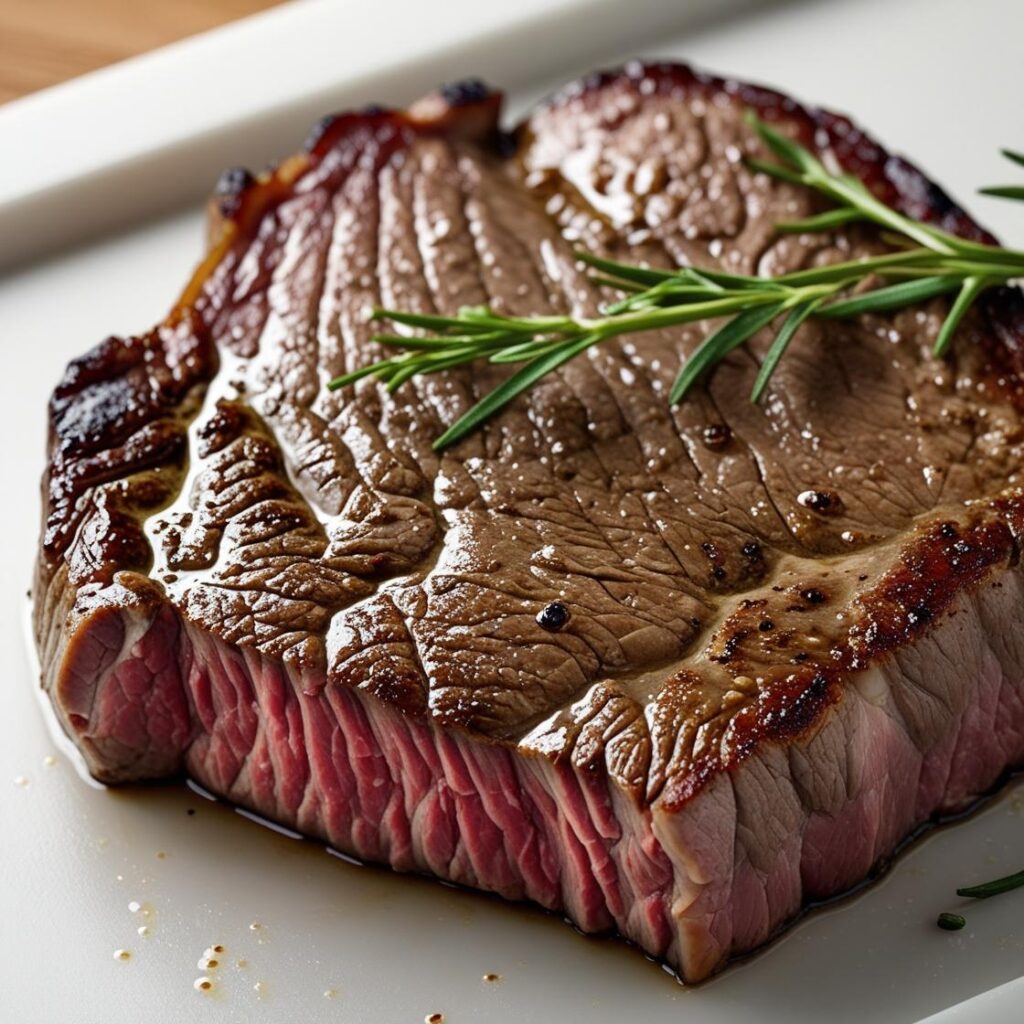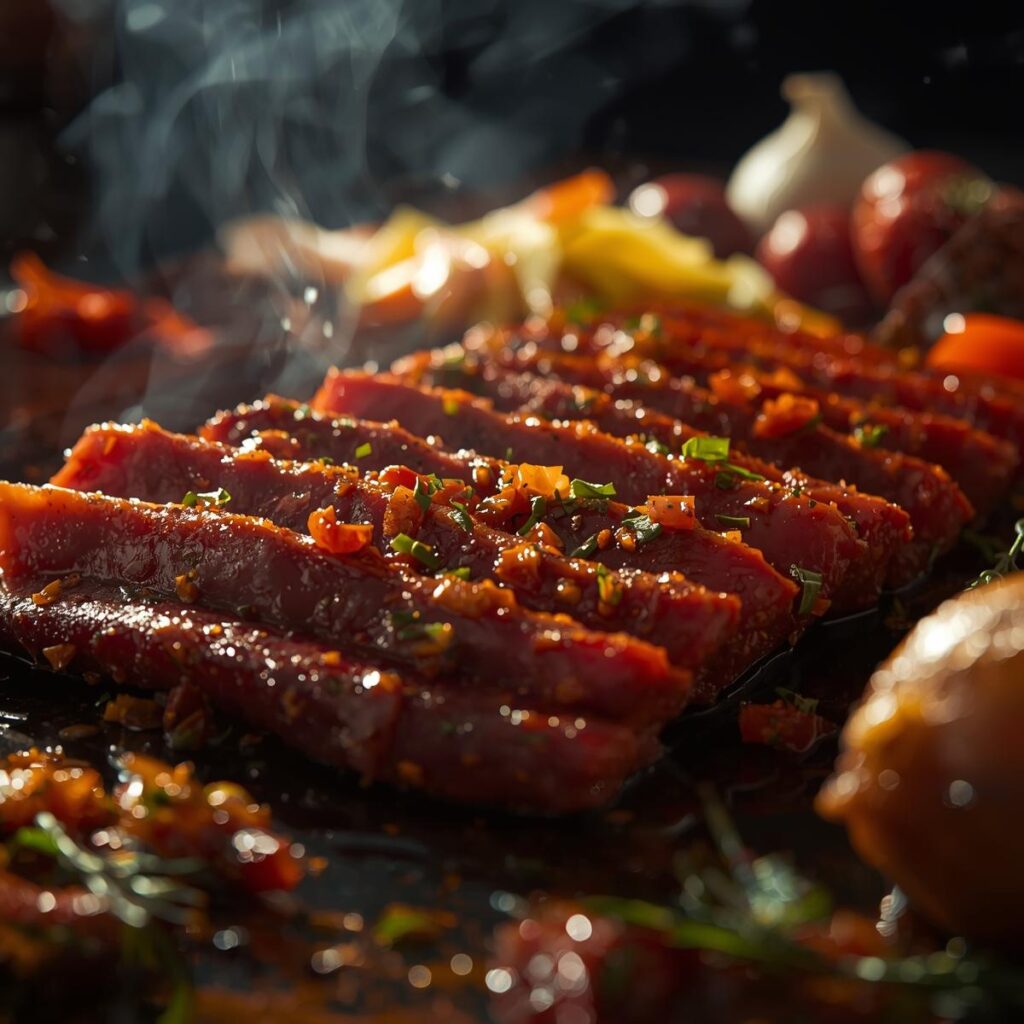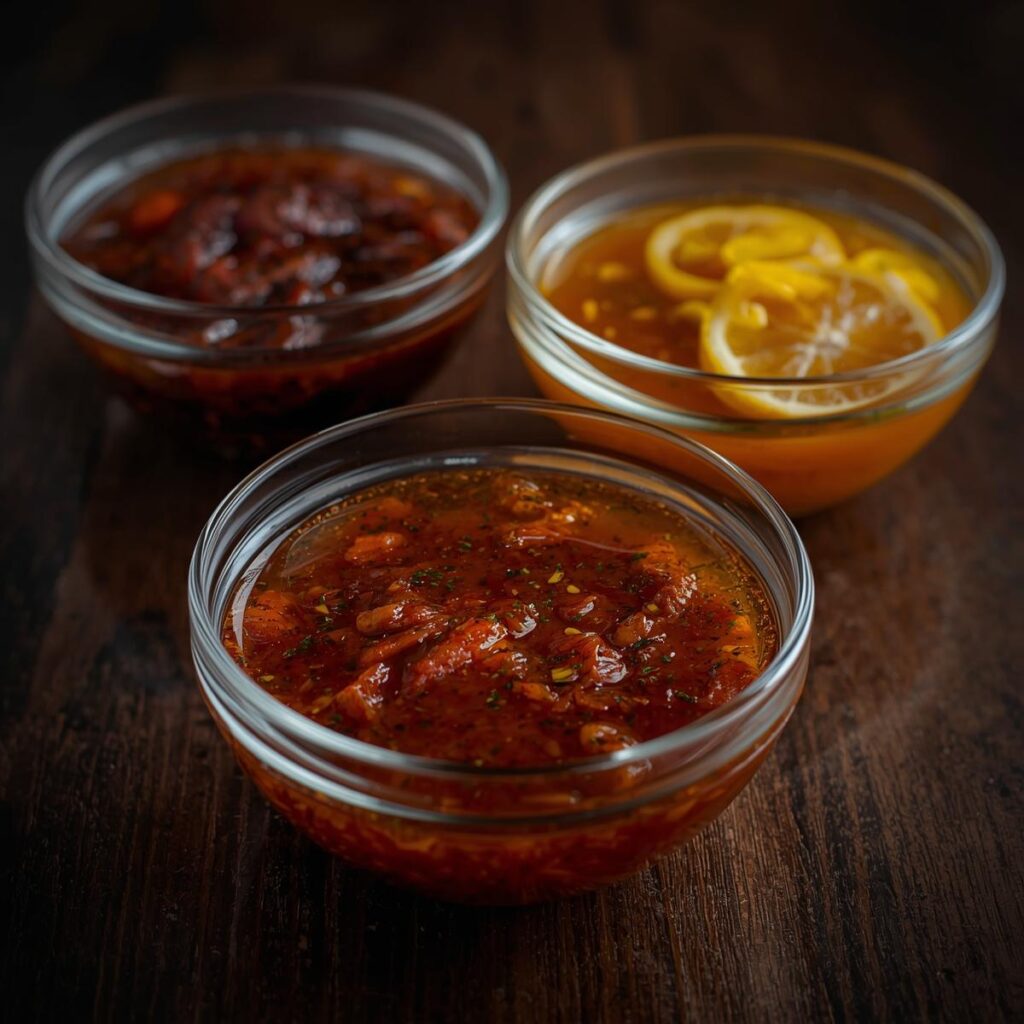Wet Brining vs Dry Brining: The Ultimate Showdown
For anyone looking to take their cooking to the next level, brining is one of the most powerful techniques in the culinary world. It’s the secret weapon of professional chefs and pitmasters alike, guaranteeing a juicy, tender, and flavorful result. But once you decide to start brining meat, you’re faced with a fundamental question: do you use a wet brine or a dry brine? The debate over wet brining vs dry brining is a passionate one, with each side claiming superiority. In this comprehensive guide, we’ll dive deep into the science behind both methods, break down their pros and cons, and help you decide which one is the right choice for your next meal.
Understanding the Science: How Brining Works
At its core, brining is all about salt. Regardless of whether you’re using a wet brine or a dry brine, the goal is to get salt into the muscle fibers of the meat. This works through two primary scientific principles:
- Osmosis: This is the movement of water across a semipermeable membrane (the cell walls of the meat) from an area of low solute concentration to an area of high solute concentration. With wet brining, the salty solution is more concentrated than the inside of the meat, so water from the brine is drawn in. With a dry brine, the salt first draws out the meat’s natural moisture, which dissolves the salt and creates a concentrated brine that is then reabsorbed into the meat.
- Denaturation: Salt also works to denature (unravel) the muscle proteins. This process allows the muscle fibers to retain more moisture as they cook. The result is meat that is much more resistant to drying out, which is key to achieving a truly juicy pork or a succulent roast turkey.
Both methods leverage these principles, but they do so in different ways, leading to distinct results.
The Case for Wet Brining: Liquid and Flavor
Wet brining is likely what you picture when you hear the word “brine.” It involves soaking meat in a solution of water, salt, and often sugar, herbs, and spices.
How to Wet Brine
The basic process is simple:
- Prepare the Brine: Dissolve salt (and any other flavorings) in water. A good rule of thumb is about 1/4 cup of kosher salt per quart of water. Make sure the liquid is ice-cold before adding the meat.
- Submerge the Meat: Place the meat in a large, food-grade container and cover it completely with the brine. You can find large food-grade containers at retailers.
- Refrigerate: Place the container in the refrigerator for the recommended amount of time, which varies based on the size of the meat.
Benefits of Wet Brining
- Adds Moisture: The most significant advantage of wet brining is that it adds a substantial amount of moisture to the meat. This is particularly beneficial for lean cuts like chicken breast or pork loin, which are prone to drying out.
- Great for Adding Flavor: The liquid in a wet brine is a perfect vehicle for infusing flavor. You can add garlic, herbs, citrus, or spices to create a custom flavor profile that penetrates deep into the meat.
- Faster for Some Cuts: For small, thin cuts of meat, a wet brine can work faster than a dry brine, as the liquid has immediate contact with the entire surface.
Drawbacks of Wet Brining
- Space Requirements: Wet brining requires a lot of space in your refrigerator. Finding a container large enough for a whole turkey can be a major challenge.
- Risk of a Soggy Bark: The added moisture can lead to a soggy bark on smoked or roasted meat.
- Can Dilute Flavor: While it adds flavor, it can also slightly dilute the natural meat flavor.
The Case for Dry Brining: The “Set it and Forget it” Method
Dry brining, also known as “pre-salting,” involves coating meat with a generous amount of salt and letting it rest uncovered.
How to Dry Brine
- Pat Meat Dry: Pat the meat completely dry with paper towels. This is a critical step for a successful dry brine.
- Coat with Salt: Liberally coat the entire surface of the meat with kosher salt. Don’t worry about using too much; the meat will only absorb what it needs.
- Refrigerate: Place the meat on a wire rack set over a plate or baking sheet. Refrigerate it uncovered for at least 12 hours, up to 2-3 days for large cuts.
Benefits of Dry Brining
- Incredibly Crispy Skin/Crust: Since there is no added moisture, the surface of the meat dries out, which is the perfect condition for creating a beautiful sear or a perfectly crispy skin.
- Concentrated Flavor: Dry brining enhances the natural flavor of the meat without diluting it. The salt pulls moisture out, then the concentrated salty liquid is reabsorbed, resulting in an intensified flavor.
- Space Efficient: You don’t need a huge container for a dry brine. All you need is a wire rack and a plate, making it much more convenient for large cuts like turkey or a pork butt.
- No Rinsing: You don’t have to rinse the meat after dry brining, saving you a step. You can simply pat it dry again before cooking.
Drawbacks of Dry Brining
- Can Take Longer: For the process to work fully, a dry brine typically requires more time than a wet brine, especially for thick cuts.
- No Flavor Infusion: You can add herbs or spices to your dry brine, but they will only season the surface, not infuse the meat with flavor.
- Risks of Too Much Salt: While the meat will only absorb what it needs, if you use a very coarse salt and don’t rub it in, it’s possible for some of the salt to remain on the surface, making the final product too salty.
- Suggested Image Alt Text: A comparison of wet brining vs dry brining setups, one with a liquid bath and one with salt on a rack.
Wet Brining vs Dry Brining: A Head-to-Head Comparison
Which Method Is Right for You?
The choice between dry brining vs wet brining depends on what you’re cooking and what your priorities are.
- Choose Dry Brining If:
- You want an exceptionally crispy skin or a deep, crunchy bark.
- You are short on refrigerator space.
- You want the natural flavor of the meat to be the star.
- You’re cooking a thick cut of meat like a pork butt or a large beef roast.
- Choose Wet Brining If:
- You are cooking a very lean piece of meat that has a high risk of drying out.
- You want to infuse the meat with a specific flavor (e.g., rosemary, garlic, bay leaves).
- You have ample refrigerator space and a large container.
- You are working with brining frozen meat where the dual-purpose method works well.
- Suggested Image Alt Text: A side-by-side comparison showing a wet brining chicken in a bucket and a dry brining chicken on a rack.
FAQ: Dry Brine vs Wet Brine — What’s Best for Pork, Turkey, and More?
Q: What’s the difference between dry brining and wet brining?
A: Dry brining uses only salt (and optional spices) rubbed directly on the meat, while wet brining involves soaking the meat in a saltwater solution. Both season and tenderize, but they work differently in terms of flavor, texture, and moisture retention.
Q: Is dry brining better than wet brining?
A: It depends on the cut and the result you want. Dry brining gives deeper seasoning, better crust or bark, and doesn’t add extra moisture. Wet brining helps lean meats stay juicier but can dilute flavor or soften the exterior if overdone.
Q: Dry brine vs wet brine for pork — what should I use?
A: Dry brining is ideal for pork shoulder, pork chops, and roasts because it enhances flavor and bark without making the meat soggy. Wet brining can help with leaner cuts like pork loin or tenderloin to prevent dryness.
Q: Wet brine vs dry brine for turkey — which is better?
A: Wet brining helps large birds like turkey retain moisture, but it can be messy. Dry brining is easier, gives better skin texture, and still produces juicy meat—making it the preferred option for many cooks.
Q: How do I dry brine a chicken?
A: Pat the chicken dry, then coat it evenly with kosher salt (about ½ to 1 teaspoon per pound). Leave it uncovered in the fridge for 12–48 hours to let the salt work and the skin dry out for crispiness.
Q: How do I wet brine pork properly?
A: Submerge the pork in a saltwater solution (usually 5–8% salt by weight) with optional sugar and spices. Refrigerate for 4–12 hours depending on the cut, then rinse and dry before cooking.
Q: What is the best way to brine meat overall?
A: For most roasts, whole birds, and BBQ cuts, dry brining is simpler and cleaner and creates better flavor concentration. Wet brining is helpful mainly for lean cuts that dry out easily.
Q: What are the benefits of wet brining over dry brining?
A: Wet brining adds moisture to lean meats, helps prevent dryness during long cooks, and can mellow out salt distribution. It’s especially helpful when the meat lacks fat or marbling.
Q: What’s the best method for brining a roast?
A: Dry brining is typically better for roasts like pork shoulder, beef chuck, and prime rib. It preserves texture, boosts flavor, and creates a superior crust or bark during cooking.
Q: Dry brine recipe vs wet brine recipe — what’s the difference?
A: A dry brine recipe uses salt and seasonings directly on the meat. A wet brine recipe mixes salt (plus sugar and spices if desired) with water to soak the meat before cooking.
Q: Can you use iodized salt for brining? A: It is generally recommended to use non-iodized salt, like kosher or sea salt. Iodized salt can sometimes leave a slight metallic taste.
Q: Can you over-brine meat? A: Yes, you can. If you brine meat for too long, especially in a wet brine, it can become too salty or develop a mushy, ham-like texture. Follow a reliable recipe for brining times.
Q: Do I need to rinse my meat after brining? A: You should always rinse meat after a wet brine to remove excess salt from the surface. For a dry brine, you do not need to rinse it, as the salt will have been reabsorbed. Simply pat it dry.
Q: How does dry brining work for steaks? A: Dry brining is the most popular method for steaks. It helps create a drier surface, which is crucial for getting a restaurant-quality crust on a steak. Apply the salt a few hours before cooking.
Conclusion: The Final Verdict
There is no single “best” method. Both wet brining vs dry brining are excellent techniques that will improve your cooking. The key is to understand the science behind each and choose the one that best suits your goals and the cut of meat you’re working with. By mastering one or both of these techniques, you’ll be well on your way to consistently cooking flavorful, juicy, and tender meat every single time. The simple truth is, any form of brining meat is better than no brining at all.






